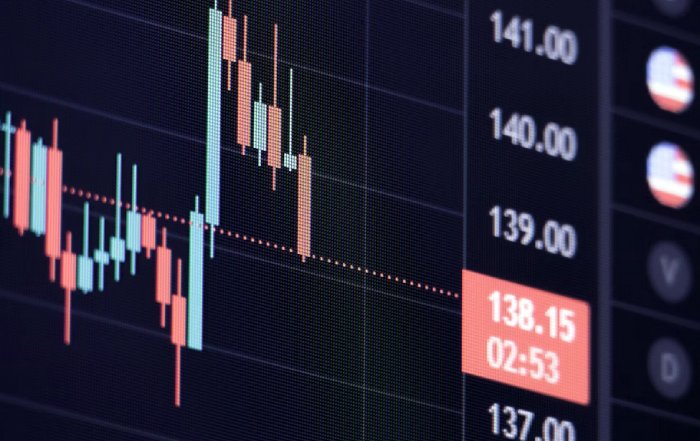How Artificial Intelligence Is Transforming Risk Assessment Worldwide in 2025
Artificial intelligence has moved from experimental pilots to mission-critical infrastructure in risk management, reshaping how organizations across continents identify, quantify and mitigate threats. For the editorial team at BizFactsDaily.com, which closely tracks the intersection of technology, finance and global business, the evolution of AI-driven risk assessment is no longer a distant trend; it is now one of the central narratives defining competitiveness, regulatory strategy and corporate resilience in 2025. From major banks in the United States and the United Kingdom to insurers in Germany, technology giants in South Korea and Singapore, and fast-scaling fintechs in Brazil and South Africa, AI-enabled models are rewriting the rules of how risk is understood and priced in real time.
The New Foundation of Risk: Data, Models and Real-Time Intelligence
The core shift in global risk assessment is the move from static, backward-looking models to dynamic, data-rich systems powered by machine learning and advanced analytics. Where traditional risk frameworks relied on limited historical data and periodic updates, modern AI platforms ingest streaming information from markets, supply chains, customer interactions and macroeconomic indicators, creating a continuously refreshed view of exposure. Organizations that once updated credit or market risk models quarterly or annually now run adaptive algorithms that learn from each new transaction, market tick or operational incident, allowing them to recalibrate assumptions within hours rather than months. Readers can explore how this shift is changing the broader business landscape in the dedicated overview of global business transformation at BizFactsDaily.com, where AI is frequently highlighted as a structural driver of competitive advantage.
A critical enabler of this transformation is the explosion of high-quality, machine-readable data. Central banks, regulators and statistical agencies publish ever richer datasets; for example, the World Bank offers extensive open economic indicators that many risk teams now integrate directly into their forecasting models through APIs, and professionals can review these resources by visiting the World Bank's portal to explore global development data. At the same time, private providers and internal corporate systems generate granular information on customer behavior, logistics performance and cyber activity, allowing AI models to detect subtle patterns that would have been invisible to human analysts or traditional statistical techniques.
AI in Financial Risk: Banking, Credit and Market Stability
Nowhere is the impact of AI on risk assessment more visible than in global banking and capital markets. Large institutions in North America, Europe and Asia increasingly deploy machine learning models for credit scoring, anti-money-laundering surveillance and market risk monitoring. These initiatives are not confined to experimental labs; they are embedded in core decision engines that determine who receives a mortgage in Canada, how small business credit lines are priced in Germany, and how trading desks in London or New York adjust exposures in volatile markets. For readers following developments in this sector, BizFactsDaily.com maintains a focused section on banking trends and analysis, where AI-driven risk innovation features prominently.
Credit risk assessment has been particularly transformed. Traditional scores based on limited financial history are giving way to multifactor AI models that incorporate cash-flow data, transactional behavior, industry conditions and even supply-chain signals. In emerging markets across Asia, Africa and South America, this has enabled lenders to extend credit to previously underserved customers who lacked conventional credit histories but exhibit strong digital payment behavior or stable business cash flows. Organizations such as FICO have documented how alternative data and AI models can improve predictive power and reduce default rates, and practitioners interested in these developments can review insights on advanced credit scoring approaches to see how these methods are being adopted globally.
Market risk management has also entered a new era. AI systems now scan millions of data points, from equity prices and bond spreads to commodities, currencies and derivatives, to identify emerging correlations and stress scenarios that might threaten portfolio stability. Major exchanges and regulators monitor systemic risk with increasingly sophisticated analytics; for example, the Bank for International Settlements publishes research on how AI and big data influence financial stability and market dynamics, and risk professionals can access BIS publications on financial stability and digital innovation to understand the supervisory context shaping these tools. As institutions integrate these insights into trading and risk platforms, they gain earlier warning of liquidity crunches, volatility spikes or contagion channels that could impact portfolios across the United States, Europe and Asia.
Fraud, Financial Crime and the AI Arms Race
Fraud detection and anti-money-laundering efforts have become a high-stakes arena where AI capabilities increasingly determine who can stay ahead of sophisticated criminal networks. Traditional rule-based systems, long used by banks and payment providers across the United Kingdom, Singapore and Australia, are being augmented or replaced by anomaly-detection models that learn normal behavior patterns and flag deviations in real time. These models can analyze transactional networks, device fingerprints, geolocation data and behavioral biometrics to identify suspicious activity that would evade static rules.
Global regulators have taken note. The Financial Action Task Force (FATF), which sets international standards for combating money laundering and terrorist financing, has issued guidance on the responsible use of digital and AI technologies in this domain, and compliance leaders can learn more about evolving AML standards to align their AI deployments with global expectations. By combining AI-powered monitoring with robust governance frameworks, financial institutions in markets from Switzerland to South Africa are reducing false positives, improving detection rates and reallocating compliance resources to the most critical cases.
At BizFactsDaily.com, coverage of artificial intelligence in financial services has highlighted a parallel trend: the rise of AI-enabled regtech startups that provide cloud-based platforms for transaction monitoring, sanctions screening and customer due diligence. These firms, often founded by former compliance and technology leaders, are bringing cutting-edge machine learning to smaller banks, fintechs and crypto platforms that lack the resources of global incumbents but face similar regulatory pressures.
Insurance, Climate Risk and the Quantification of Uncertainty
The insurance industry, historically built on actuarial science and long-term statistical averages, is undergoing a profound shift as AI tools enable more granular and forward-looking risk assessment. Insurers in France, Italy, Japan and the United States are leveraging satellite imagery, Internet of Things sensors and climate models to refine their understanding of natural catastrophe risk, from flooding and wildfires to hurricanes and droughts. This is particularly critical as climate change alters historical patterns, making traditional models less reliable and demanding more adaptive approaches.
International organizations have recognized the importance of integrating climate science with financial risk. The Intergovernmental Panel on Climate Change (IPCC) provides detailed assessments of climate scenarios and physical risks, which many insurers and asset managers now feed into AI-based models to stress-test portfolios; professionals can review IPCC reports on climate impacts and risk to better understand the scientific foundations behind these assessments. In parallel, regulators such as the European Central Bank have issued climate stress-testing frameworks for banks and insurers, and risk leaders can explore ECB climate and sustainability initiatives to align their internal models with supervisory expectations across the euro area.
For the editorial team at BizFactsDaily.com, climate-related financial risk has become a recurring theme in its coverage of sustainable business and finance, as AI enables institutions to price environmental exposure more accurately, differentiate premiums across regions such as coastal Spain or flood-prone parts of Thailand, and design innovative products that reward resilience investments. This convergence of AI, climate science and financial regulation is reshaping how insurers view both underwriting and portfolio allocation.
Operational and Cyber Risk in an Always-On Digital Economy
As organizations digitize operations and adopt cloud platforms, the nature of operational risk has shifted from physical disruptions to digital vulnerabilities. AI is now central to monitoring and mitigating these risks, particularly in cybersecurity, where threat landscapes evolve too quickly for manual methods. Enterprises in Canada, the Netherlands, South Korea and beyond deploy machine learning to detect anomalous network traffic, identify phishing campaigns, and predict which vulnerabilities are most likely to be exploited, allowing security teams to prioritize patches and response efforts.
Cybersecurity authorities and standards bodies have emphasized the importance of AI-enabled monitoring within broader resilience frameworks. The National Institute of Standards and Technology (NIST) in the United States offers detailed guidance on cybersecurity and AI risk management, and technology leaders can consult NIST resources on managing cybersecurity and AI risks to benchmark their practices against recognized standards. Similarly, the European Union Agency for Cybersecurity (ENISA) publishes reports on emerging threats and best practices for incident response, which can be invaluable for organizations operating across Europe and global supply chains; practitioners can stay informed on ENISA's threat landscape analysis to keep their risk models current.
From the vantage point of BizFactsDaily.com, which tracks technology and innovation trends, AI-driven cyber risk tools are increasingly viewed not just as defensive measures but as strategic differentiators. Companies that can demonstrate robust, AI-supported cyber resilience often enjoy greater trust from customers, regulators and partners, particularly in sectors like banking, healthcare and critical infrastructure where data breaches or outages carry systemic implications.
AI Risk in Crypto, Digital Assets and Decentralized Finance
The rise of cryptoassets and decentralized finance has created a new frontier for risk assessment, where transparency, volatility and regulatory uncertainty intersect in complex ways. AI models are now widely used to monitor blockchain transactions for illicit activity, assess smart contract vulnerabilities and quantify market risk in highly volatile token markets. Exchanges and custodians in regions such as Singapore, the United States and Switzerland deploy AI-based analytics to detect wash trading, front-running and other forms of market abuse that can undermine investor confidence.
International regulatory bodies have been working to establish clearer oversight of digital assets. The International Monetary Fund (IMF) has published research and policy recommendations on the macro-financial implications of crypto and digital currencies, and policy analysts and investors can explore IMF work on digital money and financial stability to understand how these assets fit into the broader risk landscape. National regulators, from the U.S. Securities and Exchange Commission to the Monetary Authority of Singapore, have also issued guidance on crypto markets, prompting platforms to invest heavily in AI-driven compliance and surveillance tools.
For readers of BizFactsDaily.com, the interplay between AI and digital assets is a recurring subject in the site's coverage of crypto and digital finance. Analysts there have observed that AI is not only helping identify fraud and market manipulation but also enabling more sophisticated portfolio construction strategies that account for correlations between cryptoassets, equities and macroeconomic variables, especially as institutional participation in digital markets grows across North America, Europe and parts of Asia.
Employment, Skills and the Human Side of AI-Driven Risk
While AI is revolutionizing risk assessment, it is also reshaping employment patterns and skills requirements within risk, compliance and audit functions. Across the United Kingdom, Germany, India and Australia, risk teams that once relied heavily on spreadsheet analysis and manual sampling are now hiring data scientists, machine learning engineers and AI-literate domain experts. These professionals work alongside traditional risk managers to design, train and validate models, interpret complex outputs, and translate insights into actionable policies and governance frameworks.
International organizations have emphasized the need to develop digital and analytical skills to keep pace with AI adoption. The Organisation for Economic Co-operation and Development (OECD) has produced extensive analysis on the impact of AI and automation on jobs and skills, and workforce planners can review OECD research on AI and the future of work to understand how different economies are adapting. In parallel, universities and professional bodies are launching specialized programs in quantitative risk management, regulatory technology and AI ethics, reflecting the growing demand for hybrid expertise.
At BizFactsDaily.com, which examines employment and workforce trends, editorial coverage has highlighted a key theme: AI does not eliminate the need for human judgment in risk assessment; instead, it elevates the importance of domain expertise, ethical reasoning and cross-functional collaboration. Organizations that invest in upskilling their risk professionals, rather than treating AI as a plug-and-play solution, tend to achieve better outcomes and maintain stronger trust with regulators and stakeholders.
Governance, Regulation and the Quest for Trustworthy AI
As AI models become more influential in credit decisions, fraud detection, insurance pricing and other risk-sensitive domains, questions of fairness, transparency and accountability have moved to the center of regulatory debates. Governments and supervisory bodies across Europe, North America and Asia are crafting frameworks to ensure that AI-driven risk assessment does not entrench bias, undermine consumer rights or create opaque, unaccountable systems.
The European Commission has taken a leading role with its AI regulatory initiatives, which classify certain risk-related AI applications as high-risk and subject them to stringent requirements around data quality, transparency, human oversight and robustness. Legal and compliance teams can learn more about the EU's approach to trustworthy AI to anticipate how these rules will impact credit scoring, insurance underwriting and other core risk functions. In the United States, agencies such as the Federal Reserve, FDIC and OCC have issued guidance on model risk management, emphasizing the need for rigorous validation, documentation and governance for machine learning models; banking executives can consult supervisory guidance on model risk management to ensure their AI deployments meet regulatory expectations.
For BizFactsDaily.com, which reports on global economic and policy developments, the emerging consensus is clear: AI in risk assessment must be explainable, auditable and anchored in strong governance to maintain legitimacy. Organizations are therefore investing in model risk management frameworks, fairness assessments and AI ethics committees, often drawing on emerging best practices from standards bodies and academic research institutes that specialize in trustworthy AI.
Strategic Implications for Founders, Investors and Global Enterprises
The strategic significance of AI-driven risk assessment extends far beyond compliance and operational efficiency. For founders building new ventures in fintech, insurtech, regtech or cybersecurity across hubs like London, Berlin, Toronto, Singapore and São Paulo, sophisticated risk analytics can form the core of their value proposition, enabling them to serve underserved segments, design innovative products or offer superior protection at lower cost. Investors, whether in venture capital, private equity or public markets, increasingly evaluate how well portfolio companies leverage AI to understand and manage risks, recognizing that superior risk intelligence can translate into more resilient earnings and lower downside volatility.
Global enterprises, from JPMorgan Chase and HSBC to Allianz, AXA, Samsung, Tencent and Alphabet, are embedding AI-based risk tools into strategic planning, capital allocation and supply chain design. By simulating macroeconomic shocks, geopolitical disruptions or cyber incidents, these organizations can test the robustness of their strategies under multiple scenarios, adjusting footprints and investments accordingly. Readers interested in how such capabilities influence capital markets can consult BizFactsDaily.com's dedicated coverage of stock markets and investment themes, where AI-enhanced risk analytics increasingly shape valuation narratives and investor expectations.
Within the BizFactsDaily.com community, founders and executives frequently emphasize that AI-driven risk assessment is not merely a defensive tool but a source of strategic differentiation. Companies that can quantify risk more accurately than competitors can price more competitively, move faster into new markets, and negotiate better terms with partners and capital providers, whether they operate in the United States, the United Kingdom, Singapore, South Korea or emerging African and Latin American economies.
Regional Perspectives: A Truly Global Transformation
Although AI-enabled risk assessment is a global phenomenon, its adoption patterns and priorities vary across regions. In North America, large financial institutions and technology companies lead in deploying advanced models at scale, while regulators focus on model governance, fairness and systemic stability. In Europe, a strong emphasis on consumer protection, privacy and ethical AI shapes how risk models are designed and audited, particularly in the European Union and the United Kingdom. In Asia, from China and Japan to Singapore, South Korea and Thailand, governments often play a more active role in promoting AI innovation while simultaneously tightening oversight of financial and cyber risks.
Emerging markets in Africa and South America, including South Africa, Brazil and others, are leveraging AI to leapfrog legacy systems, particularly in mobile banking, micro-insurance and digital payments, where data-driven risk models can unlock financial inclusion without compromising prudential standards. International development institutions and regional regulators often collaborate to ensure that these innovations support stability and consumer protection. For those tracking these cross-border dynamics, BizFactsDaily.com maintains a global lens in its worldwide business and policy coverage, highlighting how AI-driven risk tools are adapted to local regulatory, cultural and economic contexts.
The Road Ahead: Building Resilient, AI-Enabled Risk Ecosystems
By 2025, AI has firmly established itself as a cornerstone of modern risk assessment, yet the journey toward fully mature, trustworthy and globally harmonized AI-enabled risk ecosystems is far from complete. Organizations still grapple with challenges such as data quality, model interpretability, talent shortages and the integration of AI insights into decision-making processes that remain, in many cases, siloed or fragmented. Nonetheless, the trajectory is unmistakable: risk management is shifting from a reactive, compliance-driven function to a proactive, strategic capability that sits at the heart of corporate governance and competitive strategy.
For the editorial team and readership of BizFactsDaily.com, which spans investors, founders, executives and policymakers across continents, the message is clear. Those who invest in robust AI-driven risk assessment, grounded in strong governance, ethical principles and multidisciplinary expertise, will be better positioned to navigate an era of rapid technological change, geopolitical uncertainty and environmental disruption. The site's ongoing coverage of innovation in risk and finance, alongside its broader reporting on news and market developments, will continue to track how leading organizations translate these capabilities into durable advantage.
As AI models grow more sophisticated and compute power becomes more accessible, the frontier of risk assessment will expand further, encompassing not only financial and operational exposures but also reputational, social and environmental dimensions. In this evolving landscape, the combination of advanced analytics, human judgment and transparent governance will determine which institutions can earn and retain the trust of customers, regulators and societies worldwide.








